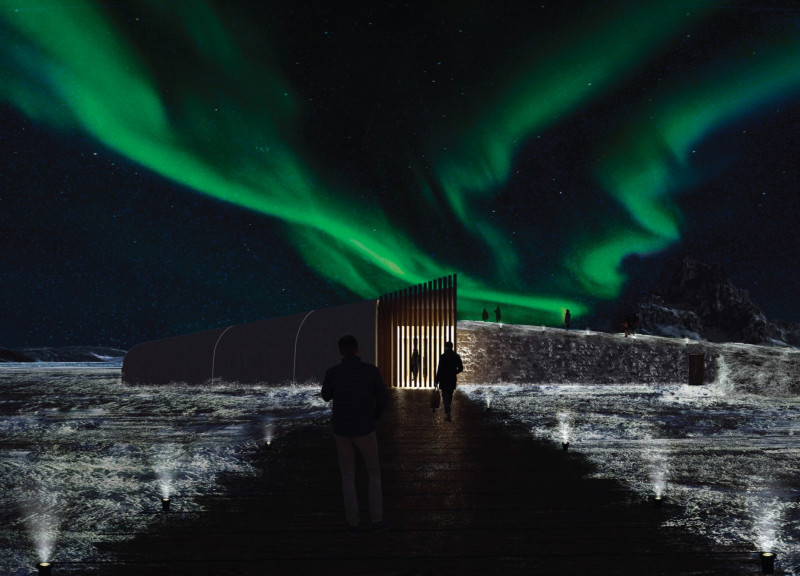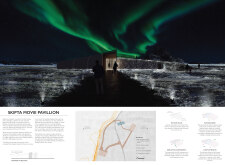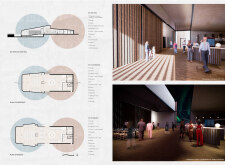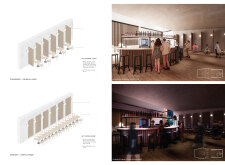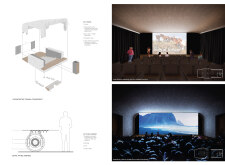5 key facts about this project
The Skipta Movie Pavilion is located in Northern Iceland, close to the geothermal springs of Grótagjá. The setting is unique, shaped by the rift between the American and Eurasian tectonic plates. The pavilion serves not only as a cultural venue for Icelandic cinema but also as a space that interacts thoughtfully with the surrounding landscape. Its design focuses on adaptability, allowing it to accommodate a variety of events, from film screenings to community gatherings.
Design Concept
The main idea behind the design is flexibility. The Cinema section of the building is kinetic, meaning it can change its shape to suit different needs. This allows the space to shift from being more enclosed to becoming an open area for larger celebrations. By doing this, the design creates a strong connection between the interior and the natural surroundings, emphasizing the local culture and environment.
Spatial Configuration
The building features three ways it can expand: neutral, convergent, and divergent. The divergent state includes a glass chasm that opens to the sky. This opening provides views of the night sky, allowing people to see events like the Northern Lights or the midnight sun. In contrast, the convergent state offers a more sheltered atmosphere, ideal for smaller gatherings where comfort and privacy are important, especially in harsh weather conditions.
Materiality and Integration
Materials used in the construction include glass-reinforced concrete, wood, and glass. These choices connect the pavilion to Icelandic architectural traditions, particularly the use of turf houses in the region. The building also features a grass roof, which adds insulation and helps it fit into the landscape.
The central chasm serves as an important circulation area, connecting different parts of the pavilion. This design encourages visitors to flow through the space, fostering interaction while providing a link to the natural phenomena in the area. The thoughtful arrangement of these elements makes the pavilion a distinct place for cultural and community activities.


